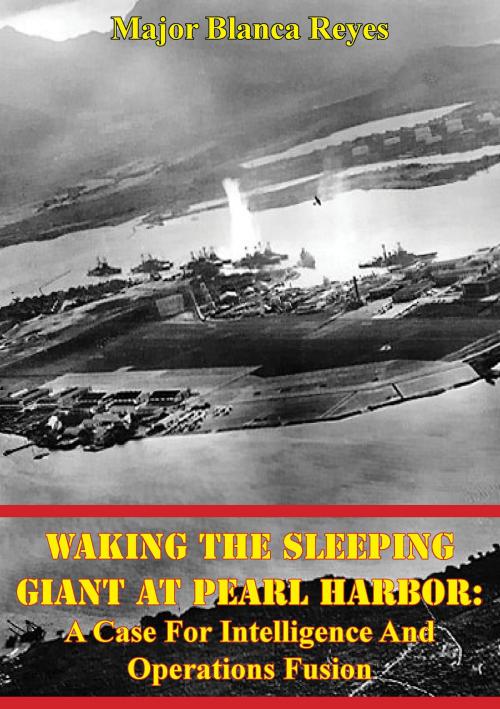Waking The Sleeping Giant At Pearl Harbor: A Case For Intelligence And Operations Fusion
Nonfiction, History, Germany, European General, Military, United States| Author: | Major Blanca Reyes | ISBN: | 9781786250766 |
| Publisher: | Lucknow Books | Publication: | November 6, 2015 |
| Imprint: | Lucknow Books | Language: | English |
| Author: | Major Blanca Reyes |
| ISBN: | 9781786250766 |
| Publisher: | Lucknow Books |
| Publication: | November 6, 2015 |
| Imprint: | Lucknow Books |
| Language: | English |
Despite the fact that for many years the United States conducted detailed planning the Japanese were still able to conduct a successful attack at Pearl Harbor. The 1907 war scare with Japan led to the initiation in America of war planning against the threat of Japanese aggression, and the establishment of a standing American capability at the Army War College, where each year students critically analyzed and recommended updates to standing defense plans. Based on these strategic plans, the Hawaiian Department implemented and developed Joint defense plans for Oahu.
Historians have shown that the United States military possessed the intelligence to indicate an impending attack on Pearl Harbor. However, the ability to respond to the attack depended on two things: early warning, and effective defense planning. In 1941, radar—the primary means of early warning—remained a new technology. Radar proved to be effective and correctly detected the incoming attack but lacked the ability to discriminate between friendly or enemy aircraft. This monograph has particular significance given today’s concern in America regarding homeland defense, since the lessons learned from analyzing the cause of the successful Pearl Harbor attack will offer insight to planners working on modern-day concerns like potential terrorist attacks against the United States involving chemical, biological, or nuclear weapons. By determining whether poor planning or lack of early warning and response capability led to the tragedy of Pearl Harbor, this research will contribute to modern efforts to prepare for homeland defense.
Despite the fact that for many years the United States conducted detailed planning the Japanese were still able to conduct a successful attack at Pearl Harbor. The 1907 war scare with Japan led to the initiation in America of war planning against the threat of Japanese aggression, and the establishment of a standing American capability at the Army War College, where each year students critically analyzed and recommended updates to standing defense plans. Based on these strategic plans, the Hawaiian Department implemented and developed Joint defense plans for Oahu.
Historians have shown that the United States military possessed the intelligence to indicate an impending attack on Pearl Harbor. However, the ability to respond to the attack depended on two things: early warning, and effective defense planning. In 1941, radar—the primary means of early warning—remained a new technology. Radar proved to be effective and correctly detected the incoming attack but lacked the ability to discriminate between friendly or enemy aircraft. This monograph has particular significance given today’s concern in America regarding homeland defense, since the lessons learned from analyzing the cause of the successful Pearl Harbor attack will offer insight to planners working on modern-day concerns like potential terrorist attacks against the United States involving chemical, biological, or nuclear weapons. By determining whether poor planning or lack of early warning and response capability led to the tragedy of Pearl Harbor, this research will contribute to modern efforts to prepare for homeland defense.


![Cover of the book At The Front In A Flivver [Illustrated Edition] by Major Blanca Reyes](https://www.kuoky.com/images/2013/january/300x300/9781782891116-ibQS_300x.jpg)


![Cover of the book THE BATTLE OF ALAM HALFA - A BATTLE REPORT [Illustrated Edition] by Major Blanca Reyes](https://www.kuoky.com/images/2014/august/300x300/9781782892656-o4S5_300x.jpg)

![Cover of the book Hunting The German Shark; The American Navy In The Underseas War [Illustrated Edition] by Major Blanca Reyes](https://www.kuoky.com/images/2013/january/300x300/9781782891185-dSms_300x.jpg)





![Cover of the book Eighth Army: El Alamein To The River Sangro [Illustrated Edition] by Major Blanca Reyes](https://www.kuoky.com/images/2015/november/300x300/9781782898399-l1yv_300x.jpg)

